Left 1
Prototype
Right
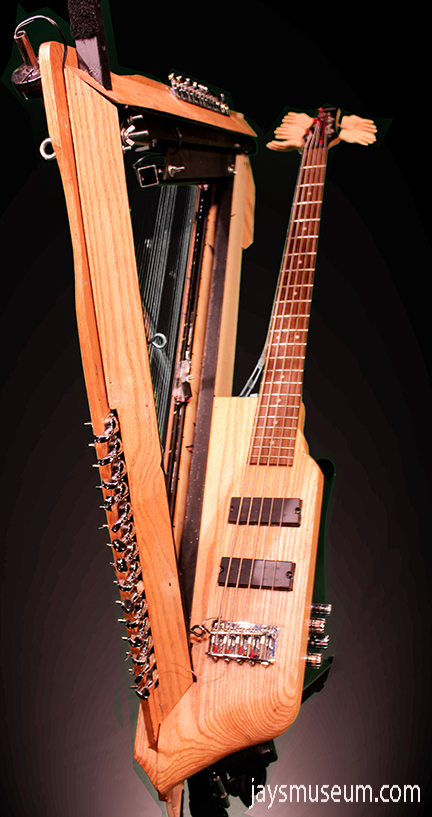



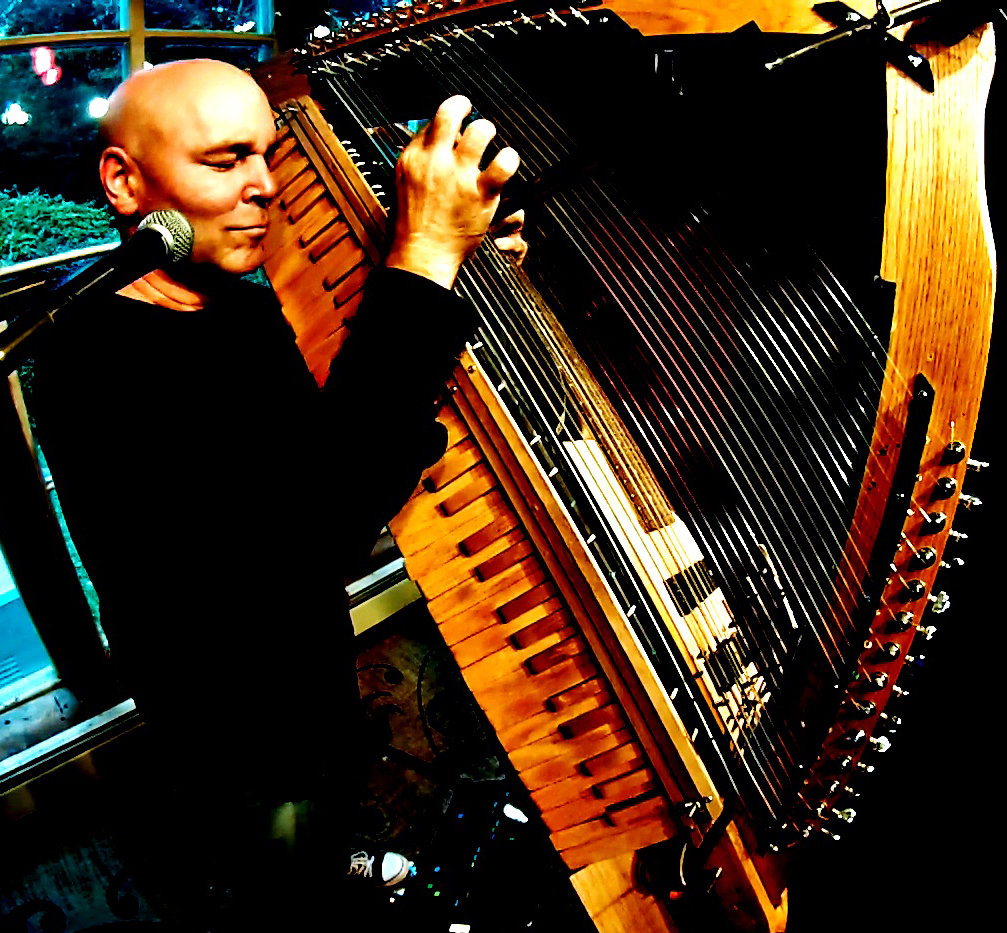

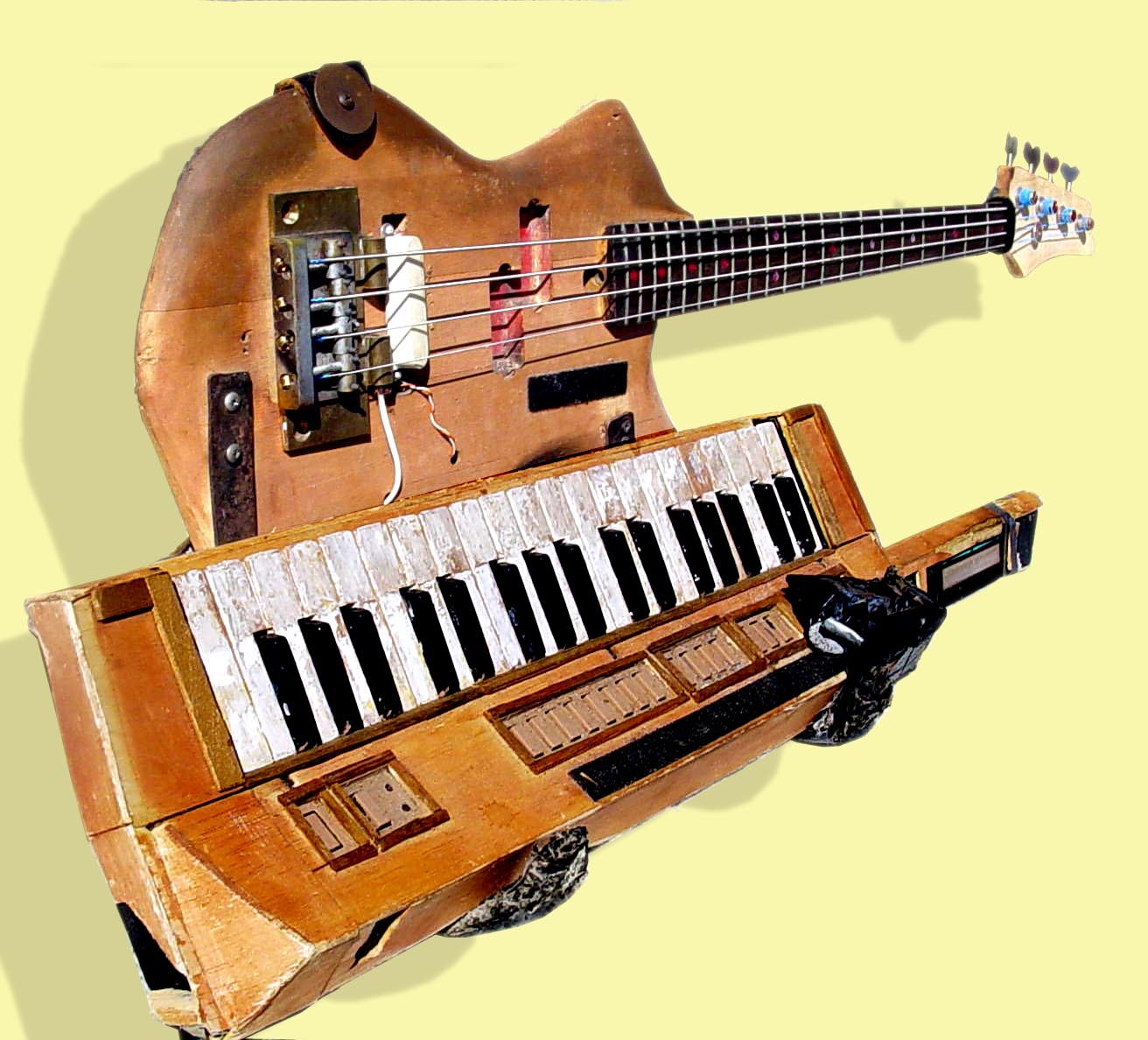
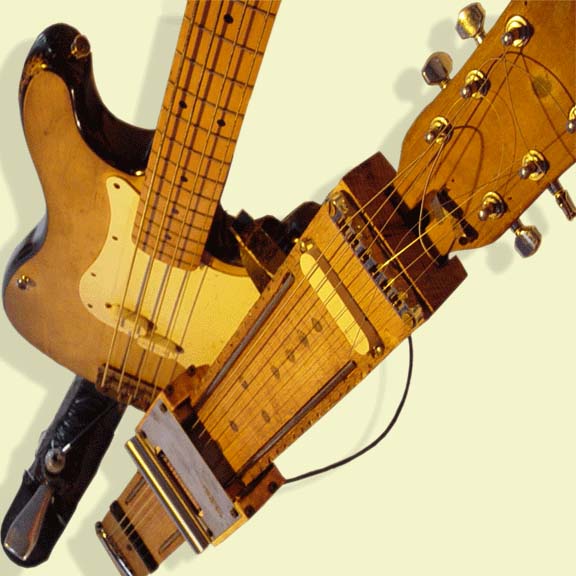
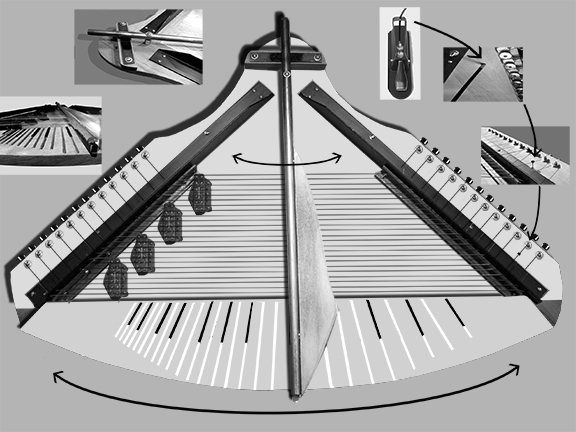
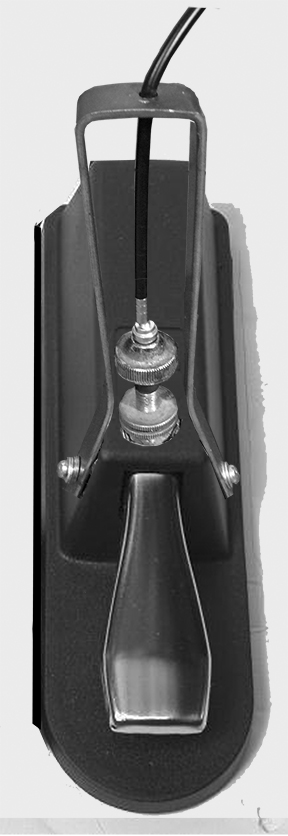
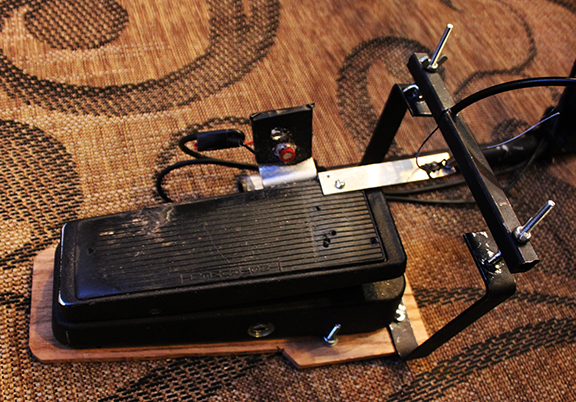
|
||||||||||||||
I've modified cry baby pedal and combined It with the hardware for the pedal steel aspect of the fractal harp. Using a single pedal in this way allows for seamless transitions between the keyboard and guitar elements of the instrument w/o the clumsy task of switching pedals. The pedal also has a instep momentary push-switch that when depressed works through a custom Reaper action command as a manual gate for vocal - to minimize unwanted noise an feedback. Having experimented with conventional Keyboard midi/cc control pedals for this task , it turns out that narrow throw of the pot on the Cry baby is much more adept at the task of wha -thus it's been hardwired to a usb interface and controls -NI guitar rig -running inside DAW Reaper
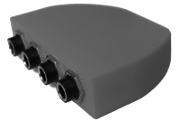

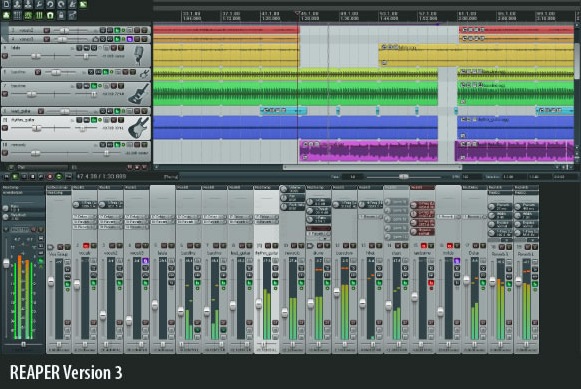
Because of it flexibility and customization features, Reaper is the primary DAW. The ability to utilize reaper's learnable "actions" custom commands is crucial to control the rig's many functions. Reaper handles digital audio from the bass and harp as well as midi from the keyboard and trigger modules in the rig. Running Inside Reaper is NI Kontakt as the primary sound source for midi elements. The majority of patches, sample sounds I use, including drums are all my own custom patches and library set up in complex routings, key groups and spits specifically laid out for the harp. Many of the sounds and patches I use now have been migrated from samplers I developed my own libraries foe years back . One of my main keyboard (fake guitar) sounds is a holdover from pre computer (sampler and synth days) is a dx7 Clavichord put through distortion and wha wha as my signature Johnny Skilsaw "slide guitar" sound that's been adapted to Kontakt.
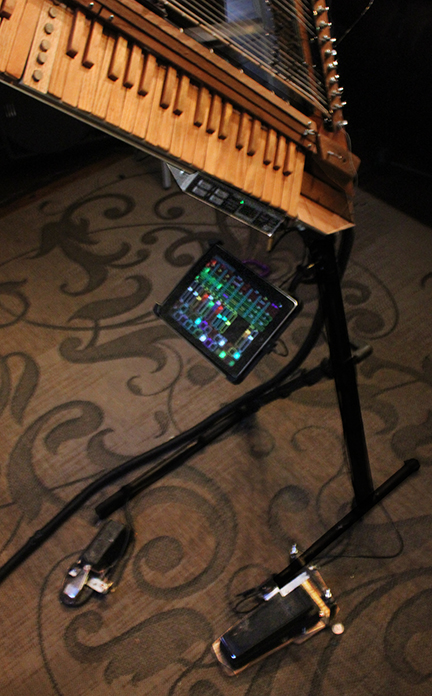
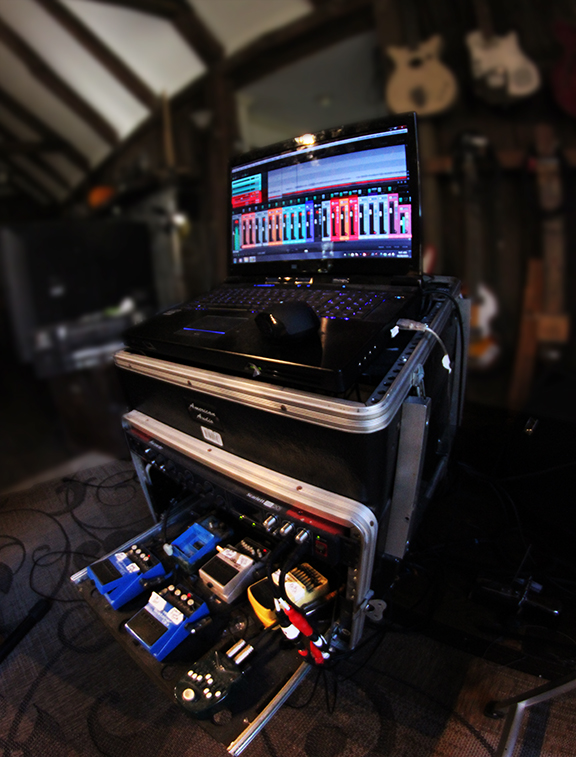
An Ipad via wifi is used running a program called Hexler Touch OSC for midi cc control as well as rudimentary mixing and transport functions of Reaper's settings. I've developed a setup with basic DAW controls, program change by midi channel and a set of buttons of mute toggles and other that allow adding additional voices on top of the selected preset. This aspect of my rig has taken a lot of thought, time and effort to develop.
Reaper "actions" also enable utilization the row of buttons for control functions such as harp distortion/FX on off as well as drums on off. The half rack unit below the right keyboard is an Alesis Trigger i/o - The unit is used to trigger velocity range (midi 0-127)reactive drum/percussion sounds in unison with notes played on the the harp.
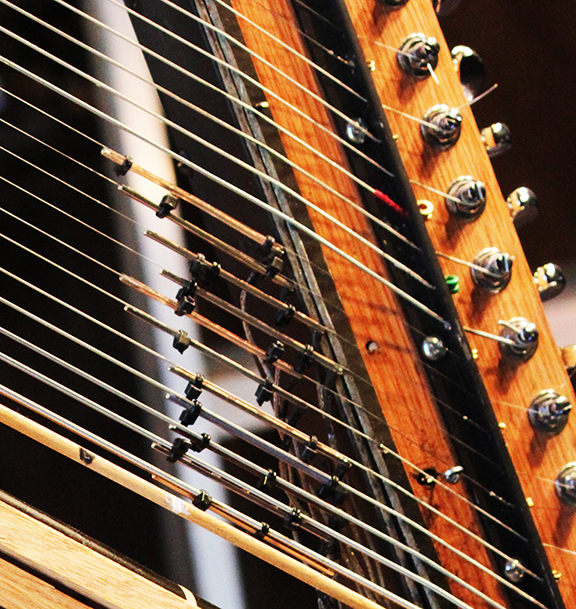
My rack has become somewhat sparse.. Reaper seems to favor the PC platform so I use a powerful AKY i7 with 32 gigs of ram as a computer. I currently use a Focusrite interface with independent systems of gates, limiters and stompboxes for the harp and bass and vocals. The rack also contains a few more Alesis I/o trigger interfaces (drum trigger interfaces) I've adopted to use for midi cc (sustain) and other reaper commands as well as additional midi triggers from the harp/bass.
There are a series of piezo guitar saddle style transducers cable tied to harps lowest 12 strings/ This factor does not mute of effect the sound of stings on the pickup side of the slide yet allows the transducers to generate a surprisingly accurate pulse that feeds into the drum interface. This translates into playable drums and percussion. As an example , a note on a particular string picked with a velocity under 80 might sound a kick drum with a simultaneous ride cymbal. The same string picked hard might be snare drum at it's loudest together with a crash cymbal. The setups that I've developed in Kontakt are an extremely intricate network of poly/mono key groups complete with canceling snare ruffs and drags. The setup also feeds a a similar layout of accompanying percussion sounds mirrored from a separate midi channel.
an example in a performance situation here and here
The keyboard aspect of the instrument shares the same approach of velocity range generated drum & percussion that seamlessly integrates transitioning between the harp and keyboard. This approach is and ever evolving and draws upon a disciplined musical playing technique & ability . It's done with deliberate knowledge with certain mindset that "loops" are for little fucking pussies and being able to change tempo on the fly it the most basic aspect of musical expression most often robbed by " technology"
Coming and going to the setup through a vacuum hose style cable manager are all the fun filled wires including Midi, USB, AC & line level audio.